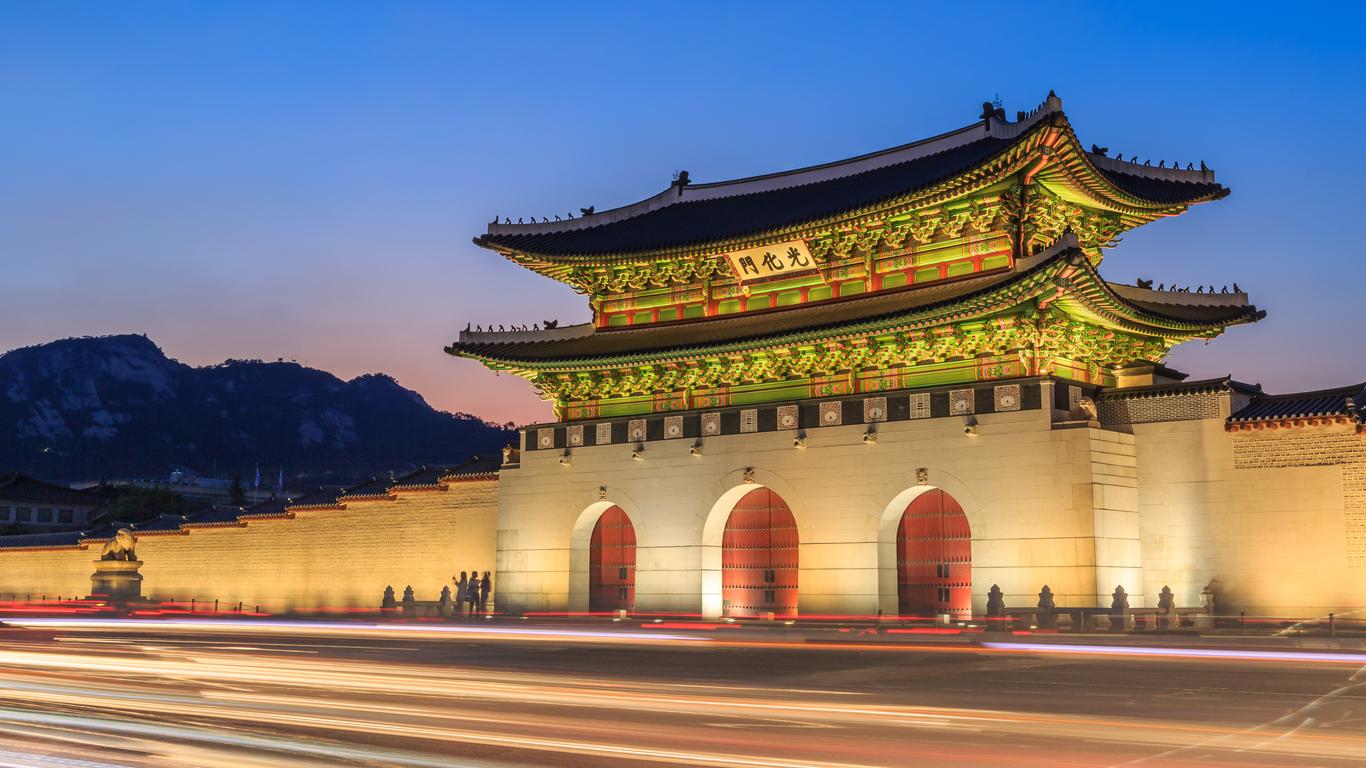Gyeongbokgung Palace, meaning “Palace greatly blessed by Heaven”, was built in northern Seoul, South Korea in 1395 during the reign of King Taejo, and served as the main royal residence for the mighty Joseon Dynasty. The Palace is located north of Gwanghwamun Square and surrounded by majestic Mount Bugaksan and Mount Namsan.
Four imposing gates surround the Palace, extending 2,404 metres along its perimeter. Gwanghwamun Gate had become the most important of the gates of the Joseon Dynasty, its job to guard the main palace and its 7,700 rooms. The Gate remains one of Seoul’s icons to this day and has seen extensive restoration involving the replacement of its original wooden gatehouse for a sturdy concrete one. The Palace grounds are home to several museums including the National Folk Museum Of Korea which is home to over 4,000 historical artefacts reflecting Korean daily life, and the National Folk Museum of Korea that exhibits relics from the Joseon Dynasty itself. Visitors who come here can witness the Palace soldiers perform their daily colourful Changing of the Guard.
The subway has two stops near to the attraction, the Gyeongbokgung Station and Gwanghwamun Station with a short walk to one another. Self-parking is also available.
Most of the royal residences were destroyed by fire during the Imjin War and Japanese Invasions and were abandoned for almost 300 years. However, all of the palace buildings were later restored under the leadership of Heungseon Daewongun.





